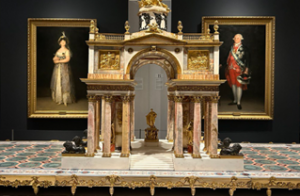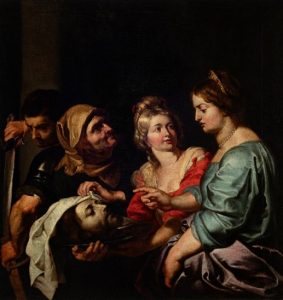Undoubtedly, the recent inauguration of the royal collections’ art gallery was one of the cultural events of the year. Its opening on July 8 aroused great expectation, achieving, with a total of 57,842 visitors, according to data provided by Patrimonio Nacional, a resounding success.
The origin of this new museum space dates back to 1935, when the construction project began during the Second Republic. This first attempt was frustrated by the outbreak of the Civil War, and was resumed in 1998, when the construction of the center was approved and work was completed in 2015. The building, designed by Emilio Tuñón Álvarez and Luis Moreno Mansilla, has been awarded several architecture prizes, most notably the first prize COAM 2016 and the FAD architecture prize in 2017.
The collection, located on three of the six floors of the building, will become, as King Felipe VI stated during the official opening ceremony, “the main instrument for the conservation, management and dissemination of the historical and artistic legacy of the Crown”.
In this sense, the course of the history of art in Spain during the Modern Age is especially conditioned by its relationship with the Monarchy. It is usual for royal tastes to set the artistic guidelines in their kingdom, however, the Spanish case is quite exceptional. Most of our sovereigns were great collectors and patrons, becoming in many cases the most relevant of their time.

For this reason, the opening of a museum space that brings together masterpieces from different disciplines such as paintings, tapestries, silver or furniture to clearly explain this history that begins with the Catholic Monarchs and the tables of Juan de Flandes to Alfonso XIII and his portrait of Ramon Casas, represents a real boost to revitalize the national cultural scene.
The concentration and selection of masterpieces is divided by monarch. While in the first room the collections of tapestries and the Royal Armory dialogue with works by Bosch, Titian, El Greco, Ribera, Velázquez and Caravaggio, among others, in the second room musical instruments, furniture and decorative arts coexist with Mengs, Goya, Tiepolo, Paret and Maella. Plant -3, which also has access from the Campo del Moro, could be defined as the plant of the 21st century. There, an immersive cube has been installed where images of architectural and natural spaces of different Royal Sites are projected in 360 degrees.



Portraits of Philip III, first by Pantoja de la Cruz in the Gallery of the Royal Collections, the second, workshop work sold at Setdart, third, work by the hand of Pantoja de la Cruz also sold at Setdart.
As we mentioned at the beginning, there is a great influence of the royal taste in the artistic panorama of his kingdom. The artists protected by the crown, the chamber painters, were the most reputable in society and therefore the most commercially successful. Let’s take an example of the portrait of Philip III by Juan Pantoja de la Cruz. The portrait preserved in the new museum is a direct replica of the artist himself. This shows us that both the king and those close to him commissioned works from artists in a show of imitation of their ruler. In the case of this portrait, it may have been commissioned by the crown for diplomatic purposes.


“Salome presenting the Baptist’s head to Herodias” by Gerard Seghers, first from the royal collection and the second adjudicated at Setdart.
In the exhibition there is also a magnificent panel by Gerard Seghers with the scene of Salome and the beheading of the Baptist. A canvas with identical composition in Seghers’ own hand was sold at Setdart last year. A fact to take into account in order to understand the value of real collecting is its impact on Spanish artists. We could not understand the evolution of Velázquez’s genius if he had not had access to the paintings of Rubens or Venetian masters such as Titian or Tintoretto. We can affirm, without any doubt, that the prestige of the collection was far above other royal houses, for example, the museum exhibits a Caravaggio’s canvas, the Cristo de Bernini, el San Cristóbal de Patinir o Philip II kneeling del Greco, just to mention some of the most brilliant foreigners.


Costume of D. Ignacio Lacaba (Chamber Surgeon of Charles IV) and costume of the Count of Sástago, circa 1790. Royal Collections and Capricho Museum, acquired in Setdart.
We could not conclude this review without expressing our gratitude for the enhancement of the decorative arts. The refined taste of the kings embraced all disciplines. The promotion of specific artists is evident, but also the patronage of trades and their protection with the royal manufactures such as the Fabrica de vidrios de la Granja, the porcelain factory of Buen Retiro or the Silk factory of Valencia. An example of the latter is the magnificent male costume circa 1790 that is very similar to the one recently acquired by the Museo del Capricho.
The birth of a museum like the Galería de las Colecciones Reales is a source of pride for all of us because of its representative catalog and its intelligent design, which is sure to become a place of pilgrimage for any art lover.







